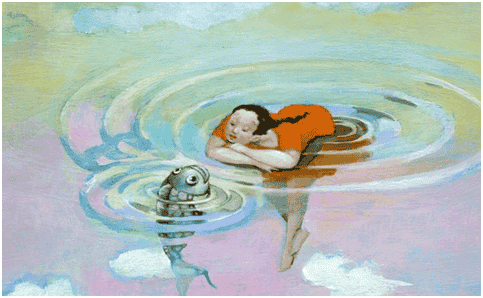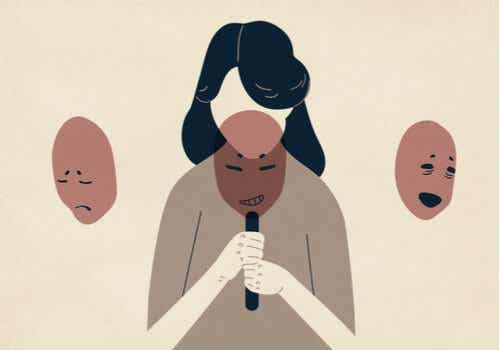
Last update: 26 November 2016
Nobody chooses to have a panic attack on a whim. Nobody invents these authentic fears that imprison, asphyxiate and take our breath away to the point of making us believe we are about to die. However, the social misunderstanding woven around these disorders further intensifies the feeling of anguish and, consequently, of loneliness.
Those who know this theme will certainly remember his first "baptism" to panic attacks. Getting out of work, for example, getting on the subway and, suddenly, hearing some people scream, nausea, bewilderment occurs and the heart skips, maddened, as if we were falling into the void, into a deep abyss.
It is estimated that nearly 10% of the world's population has at times suffered a panic attack. The real problem arises when this terrifying experience becomes recurrent and, worst of all, unpredictable. The curious aspect of all this is that, despite being one of the most common psychological disorders today, it is among the least known.
People with panic attacks are neither weak nor psychotic. He doesn't even need our compassion, what he deserves is understanding and, first of all, seeing these distressing situations as a reality common to us too.
Panic attacks and the lonely world of fears
Sweating, dizziness, dry mouth, palpitations, nausea, choking ... the panic attack comes suddenly, as if someone had pushed that red button who in bad faith unleashes horror in its truest meaning. Likewise, we cannot forget that physical symptoms are added to the certainty that you have really lost control and that your life is in danger.
What are we really afraid of when all this happens? Sometimes the fear of getting on a plane, a large crowd, small spaces or even certain distorted perceptions of what is going on in the body. Fears, even if unjustified, become authentic devourers of calm, balance and self-control.
It is almost comforting to know that all this has a very clear origin in our brain. Scholars have called it a "fear network" and tell us that people who are used to suffering what the DSM-V defines as "distress or panic disorder" have unusual activity in certain areas of the brain.
According to a work published in the journal Molecular Psychiatry, there is a network in the anterior cingulate cortex that controls our perception of fear. In this area, dimensions such as interception or self-perception of the physiological condition of our body are managed.
What does it mean? Basically this ailment arises because our fear mechanisms are irregular to the point of generating real panic reactions, even when there is no real risk. It is a factor that we should take into account in order to understand this reality much better, which is very far from responding to the whims of those who suffer from it, who suffer more than anyone else.
You can overcome it, but not alone: seek help
Many panic disorder patients prefer to suffer from their problem in silence if possible. But what lies dormant, but latent, only needs a timely trigger for the crisis to begin again. And it does, without a doubt. The demons of fear arise to mix with the bewilderment and misunderstanding of those around us and, in this way, the problem intensifies.
We need to take the plunge, seek support. We must consider that panic attacks can be associated with diseases such as hyperthyroidism, hyperparathyroidism, pheochromocytoma, vestibular dysfunction or seizure disorders.
However, in cases where there is no underlying disease, drug treatment is combined with psychotherapy. While drugs restore serotonin levels in the brain, focuses such as cognitive behavioral therapy (TCC), for example, can help with both panic attacks and generalized anxiety disorders.
The essential thing in these cases is to educate the person to observe, understand and control his physical sensations and at the same time provide him with the tools to be aware of the thoughts involved in episodes of intense distress.
We know that it is not a short or easy process and even if some techniques, such as enteroceptive exposure or progressive relaxation training, are necessary in these cases, the support of family and friends is also essential.
Believe it or not, panic attacks continue to be a theme undermined by false beliefs today. Nobody goes crazy as they suffer from panic attacks. It is not even a problem associated only with the female gender and it is not a disease to be treated with drugs.
It is necessary to change some patterns and be closer to this size. Mental illnesses have a treatment, but many social prejudices today still have no cure.


























